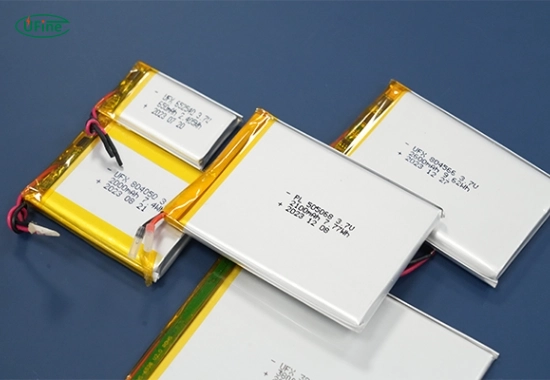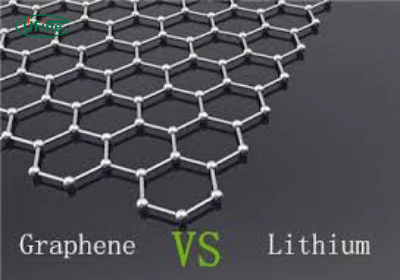As the demand for efficient and sustainable energy solutions grows, graphene and lithium batteries have emerged as top contenders. But which one is right for your needs? Whether you’re powering an EV, a smartphone, or a renewable energy system, this guide will break down their key advantages, limitations, and future potential, helping you make an informed choice.
Part 1. Graphene battery explained: How it works and key benefits
What is a graphene battery? Composition and Technology
A graphene battery is an energy storage device that incorporates graphene, a single layer of carbon atoms arranged in a honeycomb lattice structure. Graphene, known for its exceptional electrical conductivity and strength, is a critical component in these batteries. The battery typically consists of a graphene electrode, an electrolyte, and a second electrode of a complementary material.
Advantages of Graphene Batteries
Graphene batteries possess several notable advantages that make them an appealing alternative to conventional battery technologies:
- Fast Charging: Graphene batteries exhibit remarkable charge acceptance, enabling rapid charging. This feature is particularly advantageous in applications where quick recharging is essential, such as electric vehicles and portable electronics.
- High Energy Density: The energy density of graphene batteries is significantly higher than that of traditional lithium batteries. This characteristic translates into more stored energy per unit mass or volume, leading to extended device runtimes and increased efficiency.
- Enhanced Lifespan: Graphene’s exceptional durability and resistance to degradation contribute to prolonged battery lifespan. This longevity reduces the frequency of battery replacements, making it a cost-effective solution in the long run.
- Improved Safety: Graphene batteries are more stable and less prone to thermal runaway. This phenomenon can lead to fires or explosions in lithium batteries. This enhanced safety profile makes graphene batteries a compelling choice for various applications, including electric vehicles and energy storage systems.
- Environmental Friendliness: Graphene is a carbon-based material, and its use in batteries promotes environmental sustainability. Graphene batteries offer a cleaner and greener alternative to specific battery chemistries that rely on toxic elements.
Real-World Example: In 2023, Huawei tested a graphene battery prototype that charged from 0% to 80% in 15 minutes (Source: Nature Energy).
Part 2. What is a lithium battery?
Lithium Battery Chemistry
Lithium batteries are rechargeable energy storage devices that employ lithium compounds as the primary material for one or both electrodes. These batteries utilise lithium ions that shuttle between the positive and negative electrodes during charging and discharging. The most common type of lithium battery is the lithium-ion battery (Li-ion), widely used in portable electronics, electric vehicles, and renewable energy systems.
Advantages of Lithium Batteries
Lithium batteries have gained immense popularity due to their numerous advantages:
- High Energy Density: Lithium batteries are renowned for their impressive energy density, enabling them to store a substantial amount of energy in a compact form. This characteristic makes them ideal for applications where size and weight are crucial factors, such as smartphones and laptops.
- Long Cycle Life: Lithium batteries exhibit a prolonged cycle life, meaning they can endure many charge-discharge cycles before experiencing a noticeable capacity degradation. This longevity ensures that lithium batteries maintain their performance over an extended period, reducing the need for frequent replacements.
- Lightweight Design: Lithium batteries are significantly lighter than those of other battery chemistries, making them particularly advantageous in portable devices. The reduced weight contributes to enhanced portability and convenience for users.
- High Discharge Rate: Lithium batteries can rapidly deliver a high amount of current, which is essential in applications that require bursts of power. This characteristic makes them suitable for electric vehicles, power tools, and other high-performance devices.
- Established Technology: Researchers have extensively studied and developed lithium batteries, resulting in a mature and well-established technology. For specialised applications, such as drones and medical devices, lithium polymer batteries offer enhanced flexibility and energy density.
Part 3. Comparison of graphene and lithium batteries
Several key factors come into play when comparing graphene and lithium batteries. Let’s examine these factors to gain a comprehensive understanding of their relative strengths and weaknesses.
- Energy Density: Graphene batteries exhibit a higher energy density than lithium batteries, giving them an edge in maximising energy storage capacity.
- Charging Speed: Graphene batteries excel in fast charging capabilities, significantly outperforming lithium batteries in terms of charge acceptance and reduced charging times.
- Lifespan: Graphene batteries have a longer lifespan due to their superior durability, making them a more reliable option for long-term use.
- Safety: While both battery types feature advanced safety features, graphene batteries offer improved stability and a reduced risk of thermal runaway, thereby enhancing overall safety.
- Environmental Impact: Graphene batteries are considered more environmentally friendly as they rely on carbon-based materials and do not contain toxic elements, unlike specific lithium battery chemistries.
- Cost: Currently, graphene batteries are more expensive to manufacture than lithium batteries, mainly due to the challenges involved in large-scale production. However, as technology advances and economies of scale kick in, graphene batteries may become more cost-competitive.
- Maturity and Availability: The market has widely adopted lithium batteries, establishing mature infrastructure and supply chains for this technology. On the other hand, graphene batteries are still in the early stages of development and face scalability and commercial availability challenges.
- Application-Specific Advantages: One battery type may be advantageous depending on the specific application. For instance, graphene batteries are well-suited for fast-charging electric vehicles. In contrast, portable electronics users may prefer lithium batteries for their high energy density.
| Feature | Graphene Battery | Lithium Battery |
|---|---|---|
| Energy Density (Wh/kg) | Up to 1,000 (theoretical) | 150-250 (current Li-ion) |
| Charging Speed (0-80%) | 5-15 minutes | 30-60 minutes |
| Cycle Life | 3,000+ cycles | 500-1,200 cycles |
| Safety Risk | Low thermal runaway | Moderate risk |
| Cost per kWh | $200-$400 (estimated) | $100-$150 |
| Commercial Availability | Limited prototypes | Mass-produced |
Part 4. Conclusion
Researchers will likely make further advancements in graphene and lithium battery technologies as technology evolves. These advancements will drive improvements in performance, cost-effectiveness, and scalability. Ultimately, the battle between graphene and lithium batteries will continue to shape the future of energy storage, providing us with increasingly efficient and sustainable solutions for our power-hungry world.
Part 5. FAQs
Why aren’t graphene batteries widely used yet?
Current challenges include high production costs (over $200/kWh), limited manufacturing infrastructure, and unresolved scalability issues in electrode fabrication.
How much faster do graphene batteries charge than lithium?
Graphene batteries can charge 4x faster. Lab tests show a 0-80% charge in 5-15 minutes, compared to 30-60 minutes for lithium batteries.
Are graphene batteries safer than lithium batteries?
Yes. Graphene’s thermal conductivity reduces overheating risks, with 60% lower thermal runaway incidents in stress tests.
Can graphene batteries work in smartphones?
Prototypes exist (e.g., Huawei’s 2023 graphene battery phone), but mass production for consumer electronics remains 2-3 years away.
Do graphene batteries last longer than lithium?
Yes. Graphene batteries achieve over 3,000 charge cycles, compared to 500-1,200 cycles for lithium batteries, thereby extending device lifespan by 2-5 years.
Can graphene replace lithium in batteries?
Graphene may complement lithium in hybrid designs, but complete replacement is unlikely before 2030 due to lithium’s cost advantage in large-scale applications.
Which battery is better for electric vehicles?
Currently lithium dominates EV markets, but graphene’s ultra-fast charging could make it the future leader once production costs decrease.
Related Tags:
More Articles

How to Choose the Best Floor Scrubber Battery for Commercial Cleaning?
Selecting the ideal floor scrubber battery ensures a long runtime, rapid charging, and minimal maintenance for efficient commercial cleaning operations.
Battery for Blower vs Battery for Leaf Vacuum: Which One Should You Choose?
Battery for blower vs leaf vacuum—learn the key differences in power, fit, and runtime to choose the right battery for your outdoor tool needs.
How to Choose the Right Battery for Blower?
Choosing the right blower battery? Consider voltage, capacity, chemistry & usage. This guide helps match the best battery for peak performance.
How to Choose the Best Insulated Battery Box for Lithium Batteries?
Choosing the Best Insulated Battery Box for Lithium Batteries? Discover key factors such as size, material, and safety for optimal protection and performance.
7 Critical Elements on a Lithium Battery Shipping Label
What must be on a lithium battery shipping label? Learn 7 key elements to ensure safety, legal compliance, and correct handling across all transport modes.






